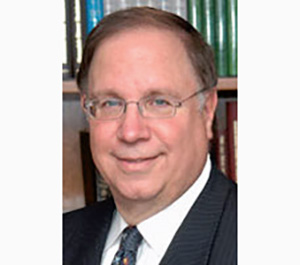
Part V
In September and October 1939, the American Jewish press reported that each organization made scant effort to organize the masses of the American Jewish community or formulate a coordinated plan to address the national upheaval in Europe. The Joint Distribution Committee (JDC), HIAS (Hebrew Sheltering and Immigrant Society), the World Jewish Congress; ORT (Jewish education and vocational training); the Jewish Federation of Polish Jews; various Landsmannschaften (Jewish immigrant benevolent associations); and other groups concerned with war relief intensified their own separate activities.
B’nai B’rith sent $1,000 to the Finish Relief Fund, and the Jewish War veterans initiated a campaign to purchase an ambulance for Finland. At a special conference held in New York on November 10, 1939, the Jewish Labor Committee announced they were initiating a drive to raise $500,000 to aid Jewish refugee writers in Europe; the Union of Orthodox Rabbis in the United States and Canada raised funds to reestablish Polish yeshivot in other countries and sought to aid their students. On December 29, an emergency conference of rabbis “resolved” that all rabbis would contribute one week’s salary to help the drive for yeshivot in Eastern Europe. The Jewish Agency sent Rabbi Stephen S. Wise, president of the American Jewish Congress, and Dr. Solomon Goldman, president of the Zionist Organization of America, to intercede with US Secretary of State Cordell Hull, British Ambassador Lord Lothian and Polish Ambassador Count Potocki in order to secure the active cooperation of their governments on behalf of the Jews.
As essential as these individual contributions were, the requirements were so vast and the obstacles so immense, that the cooperation of all American Jewish organizations was needed. The lack of a timely and decisive response by the American Jewish community received considerable attention in certain segments of the American Jewish press.
“It is no exaggeration,” observed the American Jewish Congress “… that the Jewish public mind was shell-shocked by the lightning speed of the destruction brought upon Polish Jewry. The Stalin Pact [Germany and the Soviet Union signed a non-aggression pact on August 23, 1939]; the unprecedented swiftness of the Nazi march into Poland; the barbarity accompanying that march; the crossing of the Polish border by the dictators—all of this happening within a short period of four weeks, struck blow after blow at the Jewish mind in this country.”
Samuel Margoshes echoed these sentiments when he stated in Der Tog on October 2, 1939: “The fact is that American Jewry has not as yet begun to crystallize its reactions to the war situation and to take definite steps in the direction of offering real assistance to our hard-pressed brethren in the war zone. Surely no broad-ranged plans have been formulated. Such was the terrific impact of the war news upon our conscience that we have been stunned.”
Margoshes admonished the “large Jewish organizations,” who were ostensibly dedicated to the promotion of Jewish welfare and security, for they had “allowed themselves to drift without deciding on any definite line of action.”
General Jewish Council
Responsibility for this indecisive response allegedly resided with The General Jewish Council. On June 13, 1938 the American Jewish Committee (AJC), American Jewish Congress, Jewish Labor Committee and B’nai B’rith founded the General Jewish Council to coordinate their defense activities.
Edgar J. Kaufmann, a prominent Jewish German-American businessman and philanthropist, urged American Jewish defense leaders to support the Council: “The tragic plight of millions of Jews throughout Europe—concentration camps, public degradations, mass disenfranchisements, confiscations, ruthless expulsion of our people—the spectre of increasing race prejudice, intolerance and insecurity—these terrible forces of evil demand the most effective union possible of American Jewry at once.”
To achieve this “most effective union” required the Council to provide a unified and consistent message. In August 1938, eight representatives from the organizations agreed on a constitution. The goal of the Council was to “consider and act upon proposals and plans for safeguarding the equal rights of Jews here and abroad” (http://digifindingaids.cjh.org/?pID=1446319).
Historian Naomi Cohen noted in “Not Free to Desist: The American Jewish Committee 1906-1966” that the American Jewish Committee initially opposed forming an inclusive agency for fear it would be viewed as evidence of an “exaggerated ethic solidarity,” since Jewish security depended of the benevolence of the American community.
Cohen remarked that when the AJC joined the Council, Sol M. Stroock, president of the American Jewish Committee, called the union an “unholy alliance.” Ideological differences and significant personality conflicts between the leadership of the American Jewish Congress and the Committee were simply intractable. The Council did not have common finances, and after the AJC’s success in raising significant funds in 1938-1939, this created resentment among B’nai B’rith and the American Jewish Congress.
Often the Council could not agree on how to advocate for Jewish rights overseas. Though the Council issued public statements on behalf of the Jews of Europe, and examined rescue and relief options, the Council largely focused on issues affecting U.S Jewry.
Cohen noted that one concern involved Charles Edward Coughlin, the notorious Canadian-American Roman Catholic priest at Royal Oak, Michigan’s National Shrine of the Little Flower church. His anti-Semitic diatribes, heard by close to 30 million listeners during his weekly broadcasts in the 1930s, caused much anxiety within the American Jewish community.
By Alex Grobman, PhD
Alex Grobman, a Hebrew University-trained historian, has written three new books on Israel: “BDS: The Movement to Destroy Israel,” “Erosion: Undermining Israel Through Lies and Deception” and “Cultivating Canaan: Who Owns the Holy Land?” He also wrote “Nations United: How the UN Undermines Israel and the West.” He is a consultant to the America-Israel Friendship League, a member of the Council of Scholars for Scholars for Peace in the Middle East (SPME) and a member of the Academic Council of The David S. Wyman Institute for Holocaust Studies.











